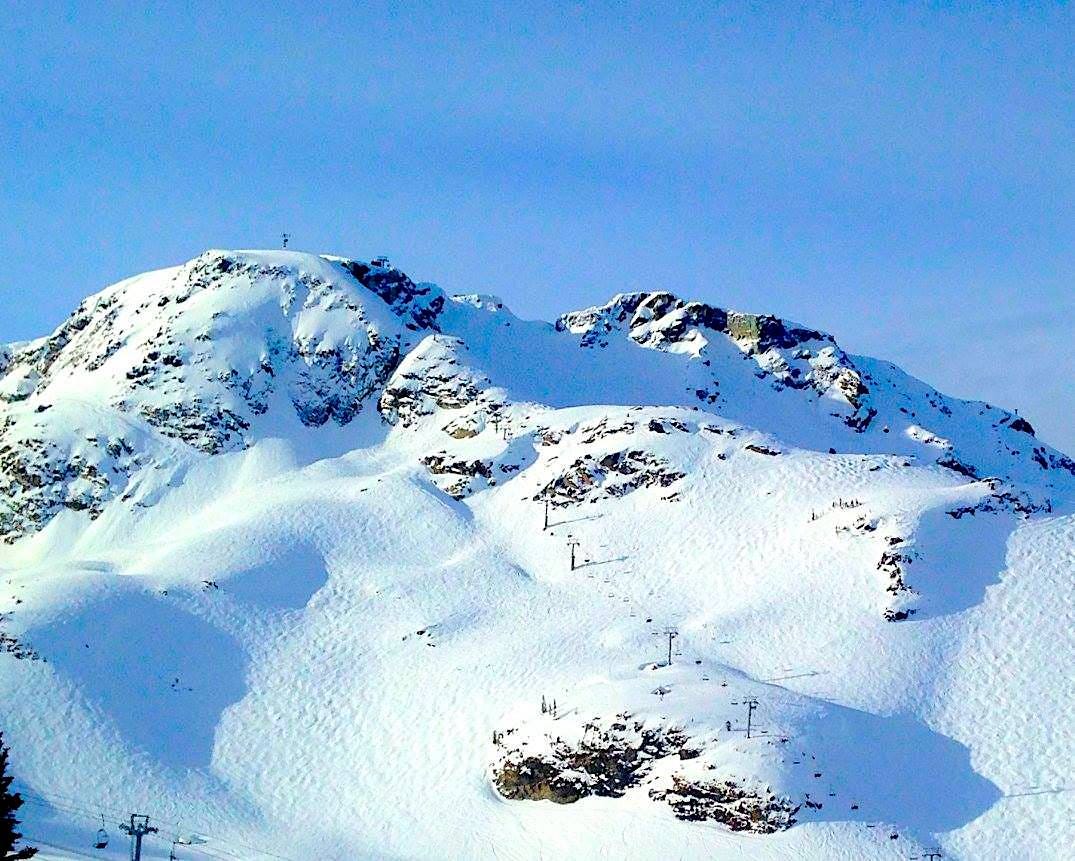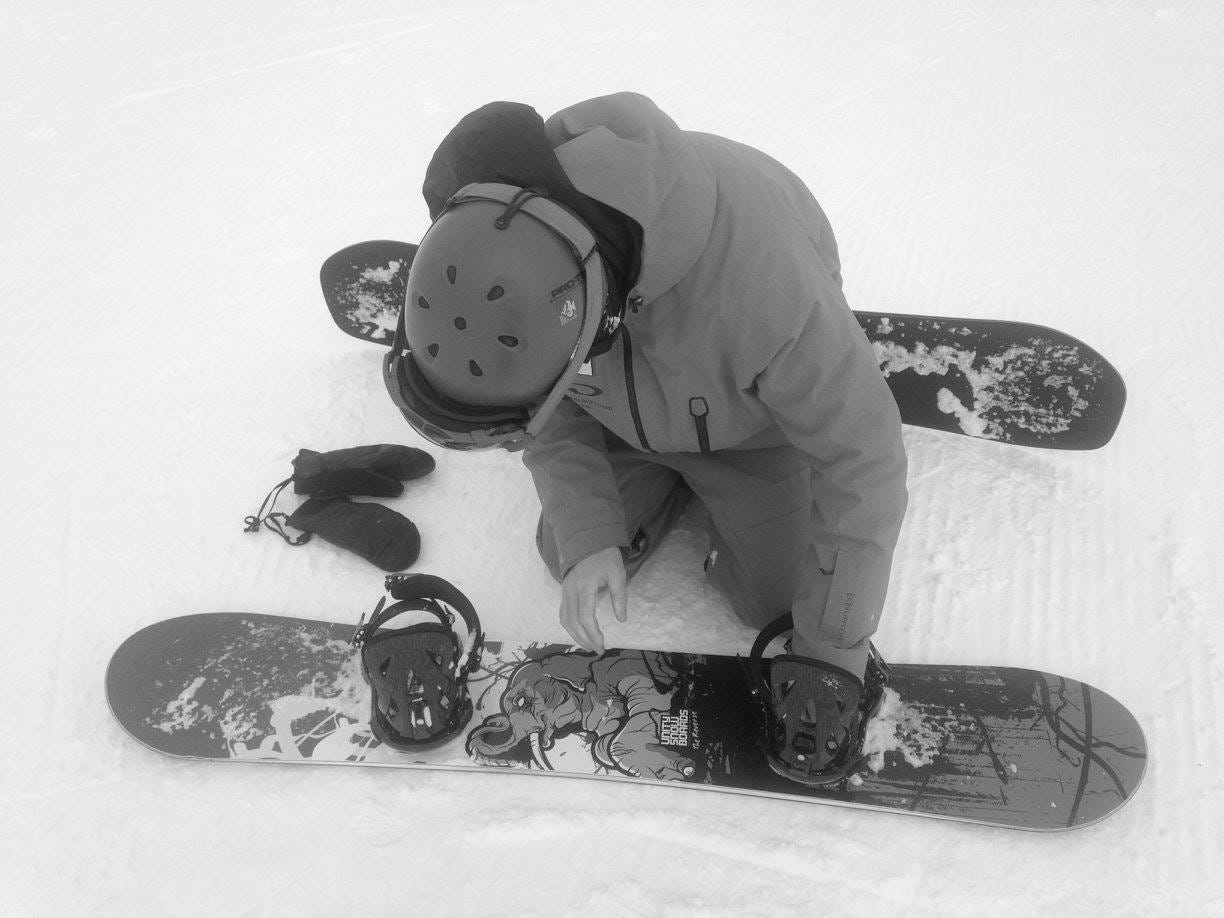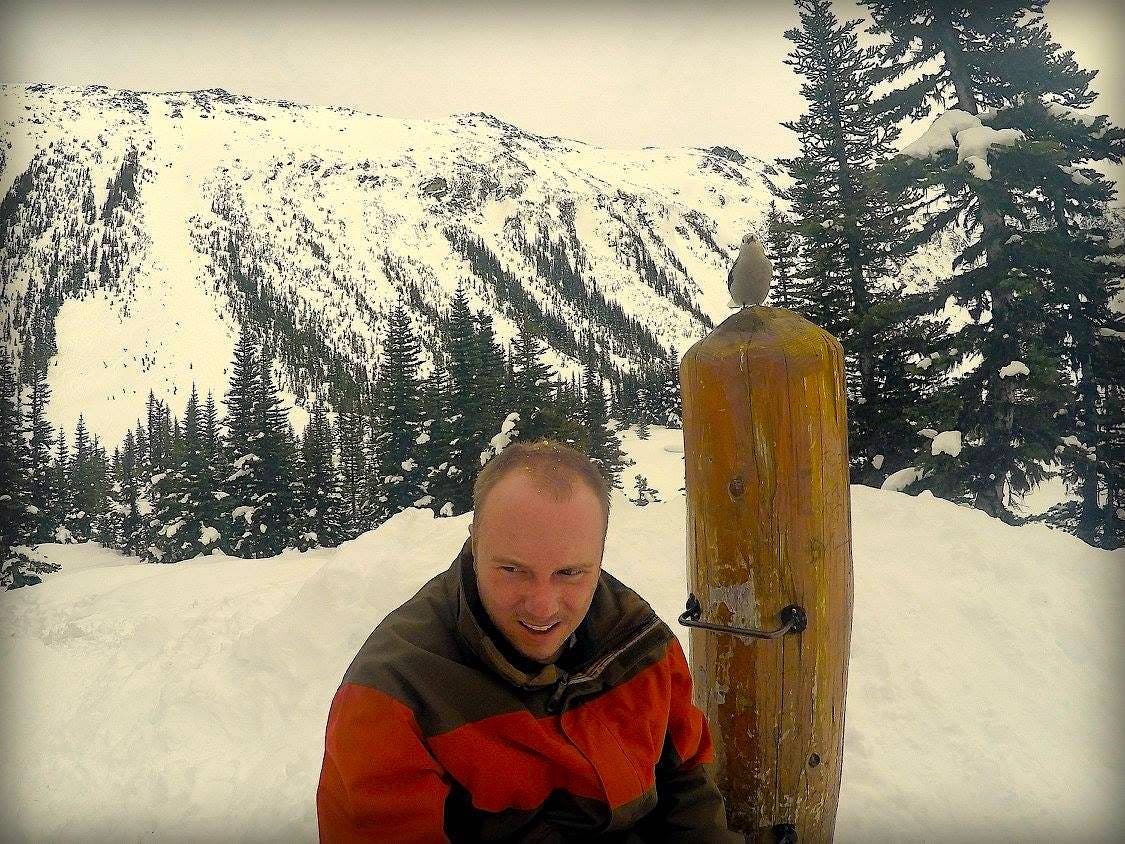That time when Whistler Blackcomb put me in my place
Or, why you should always follow your guide in unknown terrain
Hey reader,
Thanks for reading the first-ever Mountain Remote newsletter! We kick off this week with the story of a near-death experience on the steeps of Whistler.
I wanted to start off Mountain Remote with a bang — and a banger this one is. I share the story of the time I got super cliffed out on Blackcomb Mountain, leaving my guide terrified and myself clinging to a tree branch above a 60-foot drop.
Snowboarding is my biggest passion — and stories like this are a reminder that no matter how dedicated you are to something, it’s important to remain humble.
Before we get to that, I want to note the importance of proper backcountry education and gear. Sidecountry is backcountry. Always have a beacon, shovel, and probe with you in avalanche terrain. I highly recommend taking AIARE Level 1 and Level 2 avalanche training courses. I’ve taken both, and am hesitant to enter big mountain terrain with any who haven’t taken at least a Level 1.
Though this story happened in-bounds, I had on a backpack with gear. Better to be safe than sorry. Especially at Whistler Blackcomb.
And for full disclosure, this story happened while I was on a press trip hosted by Tourism Whistler in 2016. (Which may or may not land me in the undesirable camp of “journalists who almost died on a press trip.” But hey — at least it turned into a great story.)
Let’s get into it.
That time when Whistler Blackcomb put me in my place
The sun begins to set over the Fitzsimmons Range, British Columbia.
Tales of countless chutes and seemingly endless high-alpine terrain, pouring in from magazine pages and well-traveled friends, hooked me.
The opportunity for above-treeline exploration brought me to Whistler Blackcomb in February 2016. Even with years of high alpine and backcountry experience, my nerves rattled along with the turbulence on the flight from Denver to Vancouver.
I arrived in Whistler via the YVR Skylynx bus, departing Vancouver on the Sea-to-Sky Highway. Within an hour, before we’d even reached Squamish, the deep forest greens of coastal British Columbia had faded to white-capped peaks frosting the water of Howe Sound an eye-piercing shade of blue.
I felt confident. I felt ready.
It didn’t take long for the majestic mountains of the Fitzsimmons Range to put me in my place.
Dahj, the guide assigned to me by Whistler Tourism, was an Australian transplant who’d called Whistler home for five years. He was among the best snowboarders on the mountain, I was told.
Our initial encounter was awkward at best. I’d shouted across Creekside Plaza for Matt, recognizing his tall frame and bright red resort jacket from the photo I’d been sent by the resort’s press office. Baffled when he didn’t respond until I nearly bumped him with my board, he brazenly identified himself as “not Matt.”
His first question of me was about my riding ability. I boastfully proclaimed that I was from Colorado and “proudly not a gaper”.
I then realized my goggles were askew and still facing backward on my helmet. I’d been so worried about finding him amidst the tourists and trappings of a resort village I didn’t know my way around, that I’d failed to properly prepare myself for the lift line.
Dahj didn’t say anything.
Our morning consisted of short hikes and cirque laps off the Peak Express on Whistler Mountain, which I’d had to convince him to take me to, given my bomb of a first impression. This zone reaches 7,160 feet, well above British Columbia’s average treeline elevation of about 4,800 feet.
Convinced after the morning that I could handle the steep and deep without causing irreparable harm to my body or his reputation as a guide, Dahj agreed to grant my firm request that he “take me to where he’d be riding if he weren’t stuck at work.”
After lunch, we hiked off the top of Blackcomb’s Glacier Express Lift into Spanky’s Ladder -- an extreme area of bowls, spines, and tight couloirs.
Breaking here to note that to get there, we first rode the Peak 2 Peak Gondola from Whistler over to Blackcomb and it was nothing short of mindblowing. Say what you will about technology ruining the mountain experience, this gondola connecting Whistler and Blackcomb Mountains is a marvel of modern engineering.
Looking at Whistler Mountain
The snow this day was not pristine, it hadn’t snowed in nearly a week. Still, in these less-trafficked areas and with the help of a local to lead me, powder stashes abounded. Dahj led me off the top of the ten-minute hike and down a steep spine battle that eased into an open face. Across a small ridge, I spotted what appeared to be a small gulley full of powder.
Veering to my right, I ducked in and took a couple of turns. All of a sudden, I was faced with an immediate steep descent down a couloir between two jagged rocks. Within two turns I realized that ahead of me lie nothing but grey rock falling some 60 feet to ground level. There sat, to my dismay, more exposed rock and a grimacing sheet of ice.
I stopped in horror, my right hand clinging to a lone pine tree as snow skipped off the cliff right in front of me.
“Whoa, whoa, whoa!” yelled Dahj from down below. Far below me, he had continued down the open face left of my impromptu turn-off and was now sitting on the side of the run, clearly concerned and agitated.
The rock field before me appeared more jagged each time I looked down.
“I’m going to have to hike out!” I yelled back.
“This is why you’re supposed to follow the guide!” he yelled, the smirk underneath his balaclava clearly visible from my precarious post a hundred yards away. “Be very, very careful when you’re walking out of there!”
I unstrapped my board with my right hand and managed to turn around without dropping it off the cliff. My left hand stayed firmly attached to the branch. With my right hand, I picked up the board and shoved it horizontally into the snow in front of me to serve as an anchor.
Trembling, I let go of the tree.
I took two steps, then pulled up the board. I shoved it down as far ahead as I could reach and then stepped up to it again, my left hand never losing grip of my binding. I repeated this over and over for about twenty minutes, legs shaking and sweat dripping from underneath my helmet.
The temperature hovered around 34 degrees, but I felt as though I were locked in a sweltering sauna.
Finally, I reached the gully where I had first dropped into this mess. Relief washed over me like a tidal wave.
I hadn’t felt this terrified since January of 2013, when I made an impulse decision to rent a surfboard and hop into the swell at Jaco Beach in western Costa Rica, knowing full well that I was not then, and am not now, a surfer.
While danger is a constant risk with this sport, Whistler Blackcomb had firmly proved itself to me as a force to be reckoned with. Particularly if you’re a cocky Coloradan convinced he can pull a fast one on a local guide.
My guide, Dahj, on a quick tune session after lunch.
For the remainder of the day I rode with an almost crippling caution, following Dahj closely while still experiencing breathtaking terrain.
When apres-ski arrived I sat at Dusty’s Bar & BBQ having a beer. I thought about a time back in high school when myself and a friend, Tom Day, had wandered out of bounds at Copper Mountain after a descent down Tucker Mountain (pre-lift) in two feet of powder. Lost in the moment we had ended up at the two-lane Highway 91 east of the resort and had to hitchhike back to the base village.
Looking at a map later, we had barely missed the traverse back to the base. It was exhilarating, scary, and stupid. But as we sat in the bed of the pick-up truck that stopped for us I realized I had never felt more alive in my entire life.
That day at Tucker Mountain had been one of a handful of moments where I knew that this budding passion for snowboarding would play an influential role in my future. Sipping my beer on the patio at Dusty’s, I felt as alive as I had that day on Copper Mountain. I looked up at Whistler Mountain towering above the base of Creekside Village, burning with the urge to get back out there.
The beautiful thing about Whistler Blackcomb is that it will put you in your place. Here, I was an amateur. I’d tried hard to prove to Dahj that I could keep up, that I was his equal on the off-piste terrain he rode everyday.
I’d been put in my place. Still, I felt proud that I’d been able to get myself out of the situation unharmed. That I’d demonstrated poise in being able to self-arrest and hike my way out.
Just over the wrong fall line, hiding beyond sight, was a patch of terrain unlike anything I had seen before. The mountain felt like its own guide of sorts, constantly teaching me my limits.
To Dahj, I’m sorry I put you through that.
Resting on Blackcomb Mountain after the incident. Here, birds are your friend.
Dig this post? Consider sharing or opting in for a paid subscription ($7/month) to Mountain Remote via the buttons below. Every week, I share adventure stories, travel guides for the outdoor adventurer and remote worker, and tips to optimize your remote, outdoorsy lifestyle.
I’d love to hear what you think about this article.
Mountain Remote News Rundown
It might be time to plan that Ja-Pow trip you’ve been talking about for years. Japan just recorded the fastest internet speed of all time — 7.6 million times faster than typical home internet.
The Metaverse isn’t really real yet, but it’s already bigger than Jesus.
Thirty-seven Americans died in avalanches last year. 12 Canadians perished. But in Europe, that number was 130 — astonishingly high. Ethan Greene, Director of the Colorado Avalanche Information Center, discusses what we as backcountry users can learn from last year, courtesy of Jones Snowboards.
We close this week with a story I wrote for Matador. Coworking/coliving brand Selina has partnered with Volcom to create epic surfing/remote work retreats all over the world. And they even cater to people like me who can barely stand up on a surfboard — rentals and lessons are available on demand. I’ve been to two Selina locations — in Medellin, Colombia, and Oaxaca, Mexico — and they’re worth checking out, even if only for a day of coworking.








